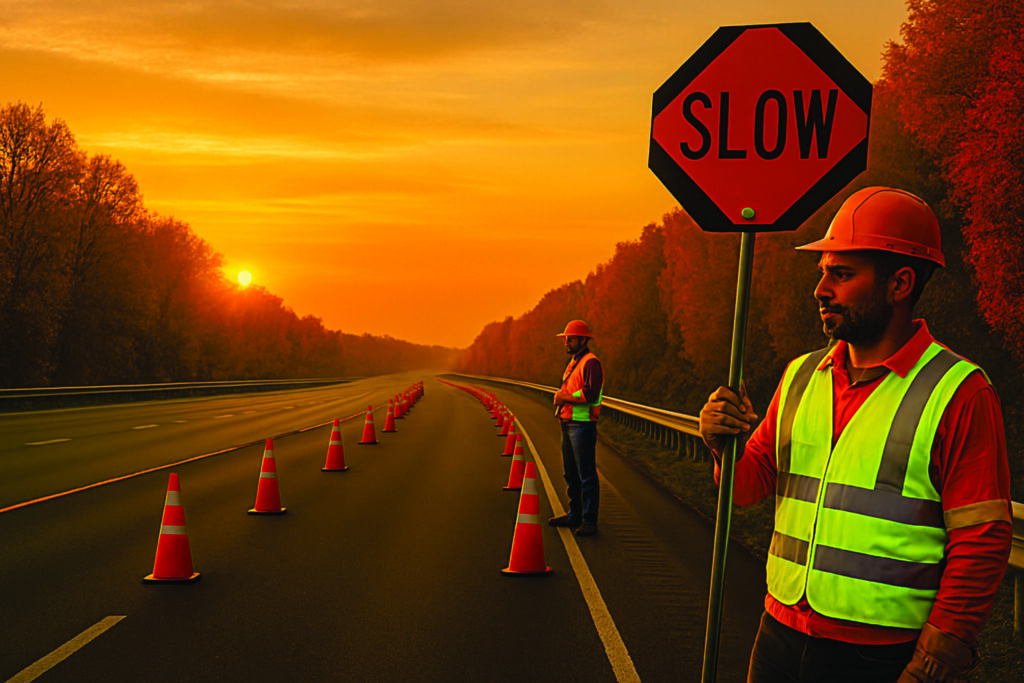Ready for fall: The need for reflective safety grows as the light fades
As summer fades, so does the light, making high-visibility safety apparel (HVSA) a priority as autumn’s later sunrises and earlier sunsets create a range of hazards. As daylight shrinks, visibility slips, and safety risks multiply, especially for anyone working near traffic or machinery.
The fading light of autumn isn’t just poetic, it’s a practical concern, and the data backs it up. Now is the moment to upgrade reflective visibility strategies. Not just gear, but knowledge, culture, and testing routines.
Shorter days, longer shadows, greater risk
By November, the sun frequently sets before 6 pm, an abrupt shift from summer’s long evenings. That change forces road crews, airport ground crews, emergency responders, and construction workers to operate in low-light conditions for more hours per day. And that’s when accidents spike.
The science behind vision and visibility is well documented (see below). What is less studied is the impact of changing clocks from Daylight Savings Time (DST) back to standard time. Certainly, picking up an “extra” hour of sleep in the fall is a benefit, but the adjustment both mentally and physically can still create situations where people are less alert or less used to the light in mornings and evenings.
Safety experts report that nighttime auto accidents are three times more fatal than daytime ones, however, whether that’s the case during twilight transitions is a subject for ongoing research. According to the National Library of Medicine, “Visual performance is impaired in low light conditions (lower luminance) and may thereby decrease the reaction time to hazards on the road.” It is likely that a big reason for more incidents during early evening and early morning (dawn and dusk) is also heavily influenced by the amount of traffic – those being the typical rush hours to and from work, school, etc.
A research paper highlighted in the journal Accident Analysis and Prevention found that pedestrians are at higher risk of a collision in the dark, all else being held equal (Uttley & Fotios, 2017). The severity of nighttime collisions is worse than that of daytime collisions, with nighttime pedestrian collisions at intersections having an 83% higher chance of being fatal without street lighting and a 54% higher chance of being fatal even with street lighting (Siddiqui, Chu, & Guttenplan, 2006). Specifically, pedestrians have been found to be at highest risk of death between 3 a.m. and 6 a.m (Chang, 2008).
Change “pedestrians” to “road crews,” “first responders,” ground crews,” or any other discipline in which workers are exposed to traffic, and what these figures underscore is what people across those industries already know: when light fades, danger increases. So let’s look at how to make it safer.
The twilight danger: why dusk and dawn aren’t just “halfway to dark”
While it’s easy to focus on the hazards of pitch-dark night shifts, it’s not just midnight or pre-dawn that pose risks. Twilight, those early morning and early evening hours when the light is reduced but not quite dark, is among the trickiest times for sight because unpredictable, low-angle light, shifting shadows, and reduced visual contrast can turn even routine worksites into high-risk environments.
Safety experts consider these periods “low-light conditions” with good reason: our eyes simply aren’t built to adapt quickly enough. That’s why industry standards insist on visibility solutions that work before it gets completely dark, and why every crew needs high-visibility safety apparel (HVSA) with reflective safety components to perform when human vision and lighting conditions are in flux:
- Reduced visibility during transitions: Around dusk and dawn, our eyes shift into what’s called mesopic vision, a low-light blend of rod (night) and cone (day) cells. This hampers depth perception, color recognition, and reaction time just when roads and job sites need the sharpest vision.
- Increased crash risk as daylight decreases: According to the National Highway Traffic Safety Administration (NHTSA), the shift to shorter autumn daylight with seasonal time change is associated with a significant increase in traffic collisions, especially during the “rush into low light.”
- Work zones and twilight hazard: A 2020 European study on road work zone safety (see below) highlights that reduced visibility during transitional hours significantly increases worker risk, because standard lighting doesn’t adapt to fading natural light.
- Glare at dawn or dusk: A low-angle sun in those hours can blind drivers, while silhouetted workers in neutral or poor-quality Hi‑Viz gear may vanish into glare and shadows. That’s why standards like ANSI/ISEA 107 define “low‑light conditions” to include fog, twilight, and dusk.
- Airport ground crew risks: Recent TSB airport investigations revealed runway edge light damage during early-morning inspections, highlighting how insufficient contrast in twilight can hide vehicle or crew presence just before or after full darkness.
- Darkness increases distractions: For reasons that researchers don’t fully understand yet, incidents of distracted driving increase as the light fades. The National Safety Council (NSC) notes that the decrease in daylight hours compounds this problem, as drivers may be more tempted to use their mobile devices, adjust in-car entertainment systems, or engage in other distractions to compensate for reduced visibility.
According to the IRIS safety management review at the Transport Research Arena TRA 2020, adapting to the eye’s visibility limits at dawn and dusk is a critical safety measure for road work zones. The report calls for LED lighting and illumination of critical zones, but equally important is making sure workers themselves are visible. Using high performance fluorescent and reflective gear can help counteract human limitations during twilight transitions.
Reflective trim: the Safe Reflections® difference
We’ve said it before, but it bears repeating; Not all high-visibility safety gear is created equal. At Safe Reflections®, it’s not just about being seen. It’s about being safe, durable and comfortable wherever teams are working. From roadside emergencies to construction, airport ground crews, and beyond, here is how we work to keep everyone visibly safer:
AIREX® segmented trims
- The world’s first breathable, segmented reflective trim, AIREX® combines comfort and visibility. AIREX® uses micro glass‑bead retroreflective technology in a breathable, flexible layout that’s engineered to flex with body movements, resist abrasion, and maintain visibility even after laundering or heavy use. It stretches with the wearer, allows air and moisture to pass through, and retains brightness even after industrial wash cycles, up to 2–3× longer than standard trims.
- AIREX® Silver & Triple Trim
- AIREX® Silver delivers high-brightness retroreflectivity for low-light and night conditions.
- AIREX® Triple Trim adds high-visibility fluorescence—visible in daylight, dusk, and dawn—plus silver bands for nighttime reflectivity. It’s engineered for all-light, all-day performance.
- AIREX® Silver & Triple Trim
Brilliant® Color Roll Goods™
- Safety doesn’t have to be monotone. Brilliant® Color brings retroreflective capability to 100+ vibrant colors – ideal for branding without compromising visibility.
Silver Roll Goods™ & XE™ Technology
- Silver Roll Goods™ deliver high-brightness silver reflective material in both solid and segmented formats. Available in home-wash, industrial-wash, Flame-Resistant (FR), and Durable Water Repellent (DWR) options.
XE™ Technology
XE™ Technology, developed by SRI Labs, combines advanced retroreflective technology with precise printing and detail, making it ideal for graphics, labels, logos and more. High-visibility reflective color and graphics add an outstanding measure of safety to all soft and hard good surfaces making it the ideal choice for personnel safety.
Tested to outperform: SRI Labs brings the science
Around here, good isn’t good enough. Behind every Safe Reflections product is SRI Labs, Safe Reflections’ in-house R&D and testing center and one of the only dedicated reflective materials labs in the industry. From early prototyping to final production, every trim and material is pushed beyond ANSI/ISEA 107, ISO 20471, NFPA, ASTM, and Oeko‑Tex standards in the name of worker safety.
SRI Labs testing includes:
- Multi-cycle industrial laundering
- Flex and abrasion resistance
- UV exposure, heat, flame (ASTM D6413), and chemical resistance
- Real-world simulation of wash cycles, heavy flexing, and harsh work conditions
The science of fluorescence and retroreflectivity
Safety in fading light isn’t just about reflectivity; fluorescence also matters in twilight. Unlike purely retroreflective materials that rely on an external light source, high-visibility fluorescent fabrics absorb UV from daylight and re-emit it as visible light. That literally makes neon materials glow during early morning, dusk, and overcast hours.
That’s why Safe Reflections integrates both into our product lines, pairing UV-activated fluorescent materials with micro glass-bead retroreflectivity so worker visibility kicks in before sunrise and stays bright well past sunset.
Make reflective safety visibility part of your fall safety plan
Here’s a four-step action plan to brighten up any visibility gap before the clocks shift:
1. Inventory check: evaluate what’s still pulling its weight
Start by identifying gear that’s been through too many wash cycles, or that lacks segmented, breathable reflectivity. Prioritize retiring garments with cracked, narrow, or dull tape. Replace with Safe Reflections solutions like AIREX® segmented trim for breathable comfort, Triple Trim for full-spectrum visibility, and FR trims for fire and arc flash protection.
Pro tip: If you can’t see the retroreflective tape from 300 feet away under overcast sky or dim LED site lights, it may no longer be up to the job.
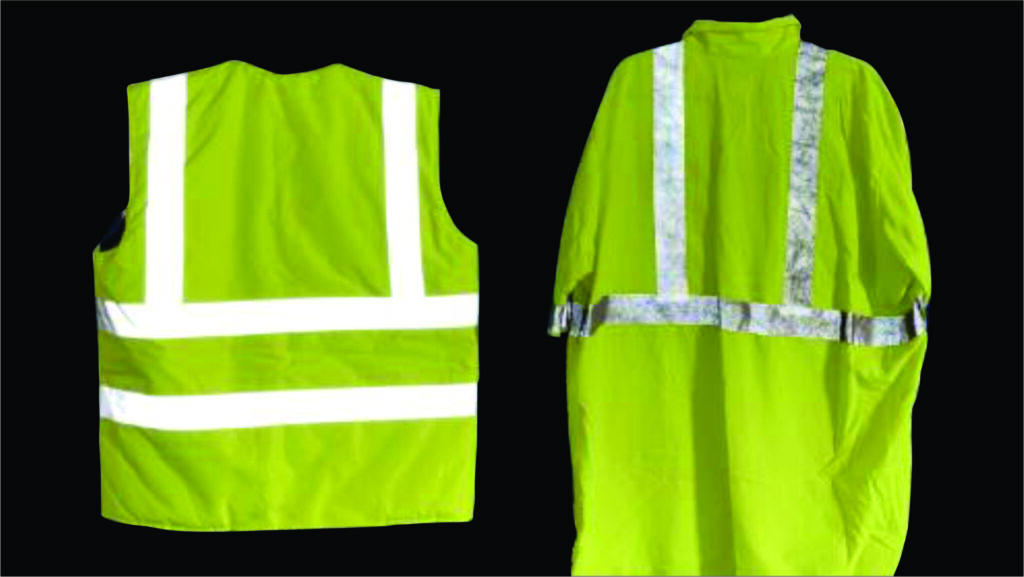
2. Smart ordering: specify what actually works
Every new uniform or safety vest order should explicitly require compliance with ANSI/ISEA 107, ISO 20471, and (where applicable) NFPA 2112 or ASTM D6413. Look for retroreflective + fluorescent combinations, especially for workers active across light conditions—like early-morning road crews, evening airfield workers, or rotating-shift warehouse staff.
Pro tip: AIREX® Triple Trim, Brilliant® Color Roll Goods™, and Silver Roll Goods™ with industrial wash durability are all proven performers that balance visibility, comfort, and lifespan.
3. Train for visibility: safety isn’t just in the reflective trim
Reflective safety gear alone doesn’t save lives; workplace culture does. Supervisors should explain why visibility matters, not just mandate it. Workers should feel empowered to call out worn gear or dim lighting. The goal is to make visibility a shared value, not a checkbox:
- Teach workers how sun angle, vehicle blind spots, and site lighting gaps affect visibility.
- Encourage supervisors to monitor and correct unsafe habits like wearing outer layers that obscure reflective trim.
- Simulate real-world conditions, such as dim lighting, fog, or dusk, to show how proper positioning and posture increase visibility to oncoming vehicles.
Pro tip: Here’s what visibility looks like under different lighting. Brighter is better.
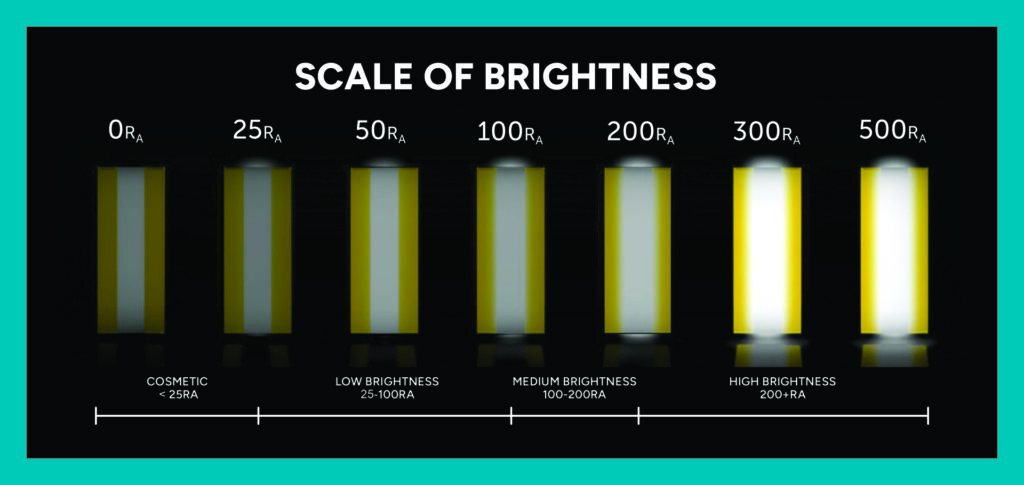
4. Test, don’t guess: verify gear performance like the pros do
Unfortunately, you can’t really accurately test retroreflectivity with a flashlight. That’s why pros use calibrated lux meters or portable light booths to measure both retroreflectivity and fluorescence, the two systems that keep people visible in variable light.
At SRI Labs, we test our trims far beyond the minimum:
- 100+ industrial wash cycles
- UV and heat exposure
- Abrasion, flex, and chemical durability
- Flame resistance (ASTM D6413)
Since few companies have a professional lab, it’s important to adopt the mindset. Review high-visibility safety apparel gear before the season starts, and get it tested if necessary. Regular inspections allow the tracking of wear patterns over time, so you know when safety is slipping before anyone gets hurt.
Don’t let the fading light leave you in the dark
Fall is closer than it feels — and fading light doesn’t wait for the calendar: There’s no better time than now to prepare for it.
Investing in Safe Reflections AIREX® segmented trim, Brilliant® fluorescent enhancements, and NFPA-compliant FR options isn’t just good policy, it’s smart protection. Backed by SRI Labs testing and engineered for durability, our high-visibility trims keep your teams seen, compliant, and confident in fading light.
Don’t wait for shorter days to catch workers off guard. Make sure you remain Hi-Vis as the light fades – contact us now to request Safe Reflections trim samples or ask about a custom reflectivity audit for your current gear.
Recent Resources
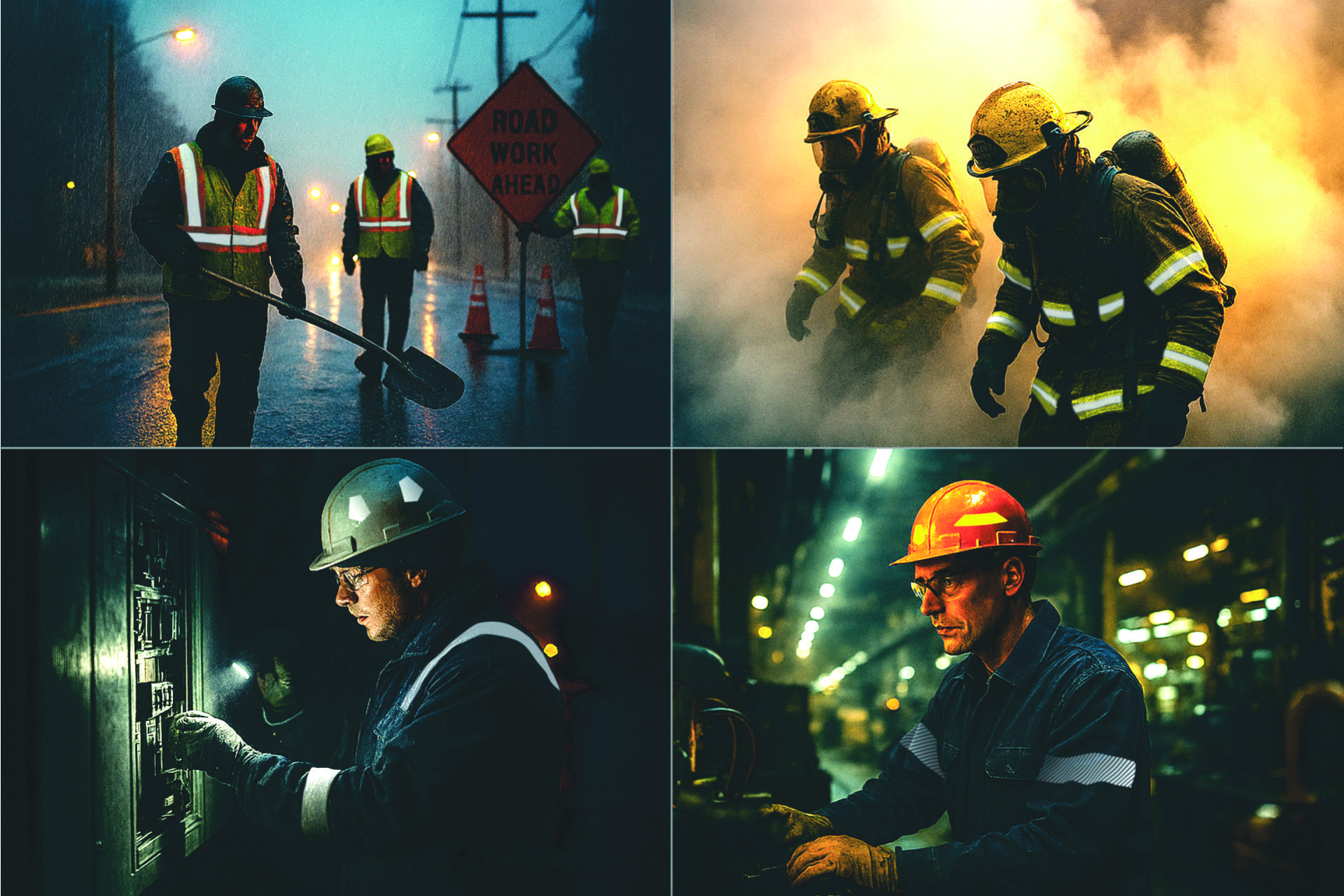
Reflections on 2025, Shining a Light on 2026
We want to take a moment to thank everyone who plays a part in making high-visibility safety possible: the workers who wear
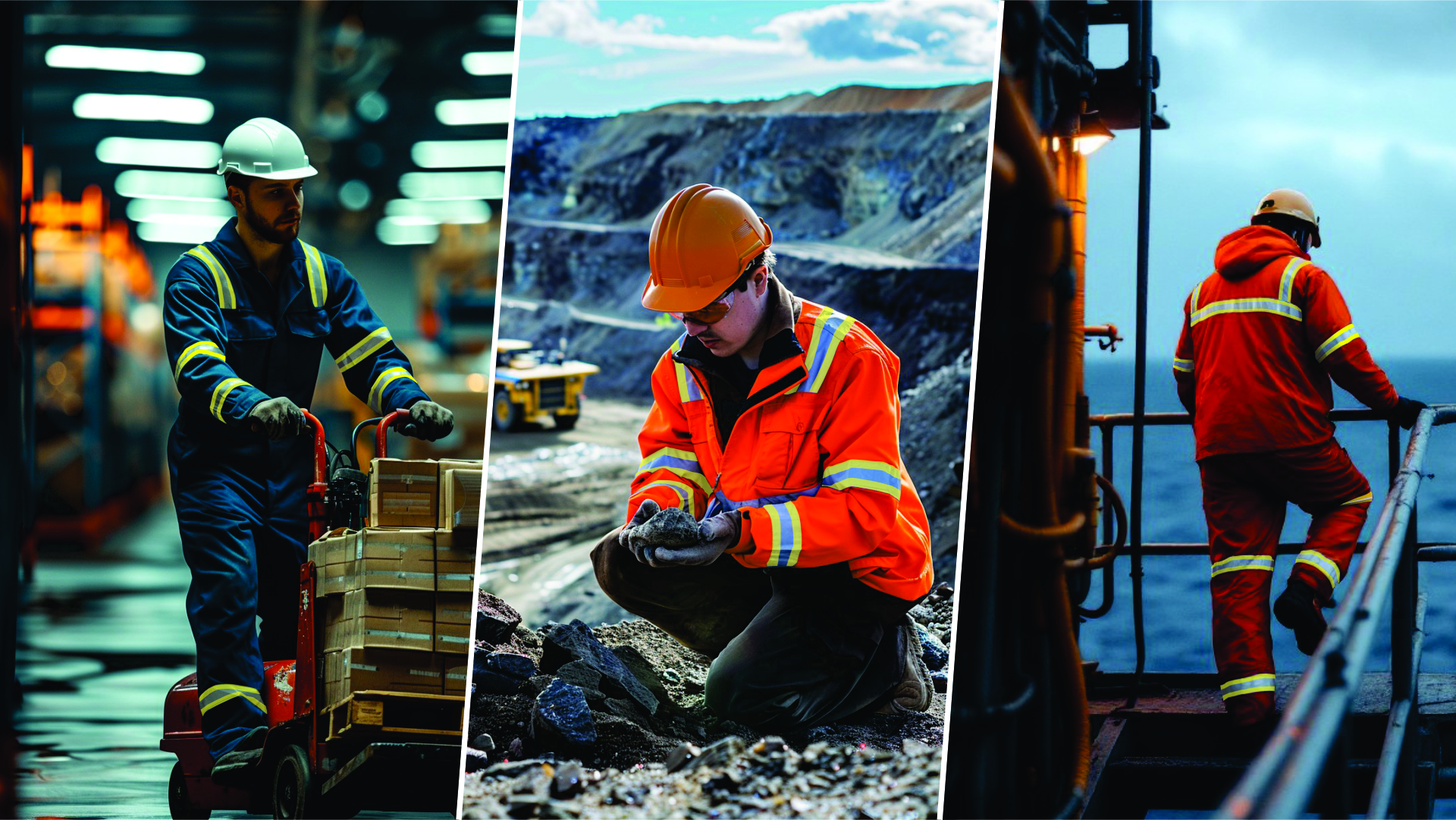
Spotlight On: Type O Trim Has a Bright Future
Type O Trim – that now-ubiquitous 1″ yellow-silver-yellow staple became the go-to workhorse of the offroad HVSA world of work over the
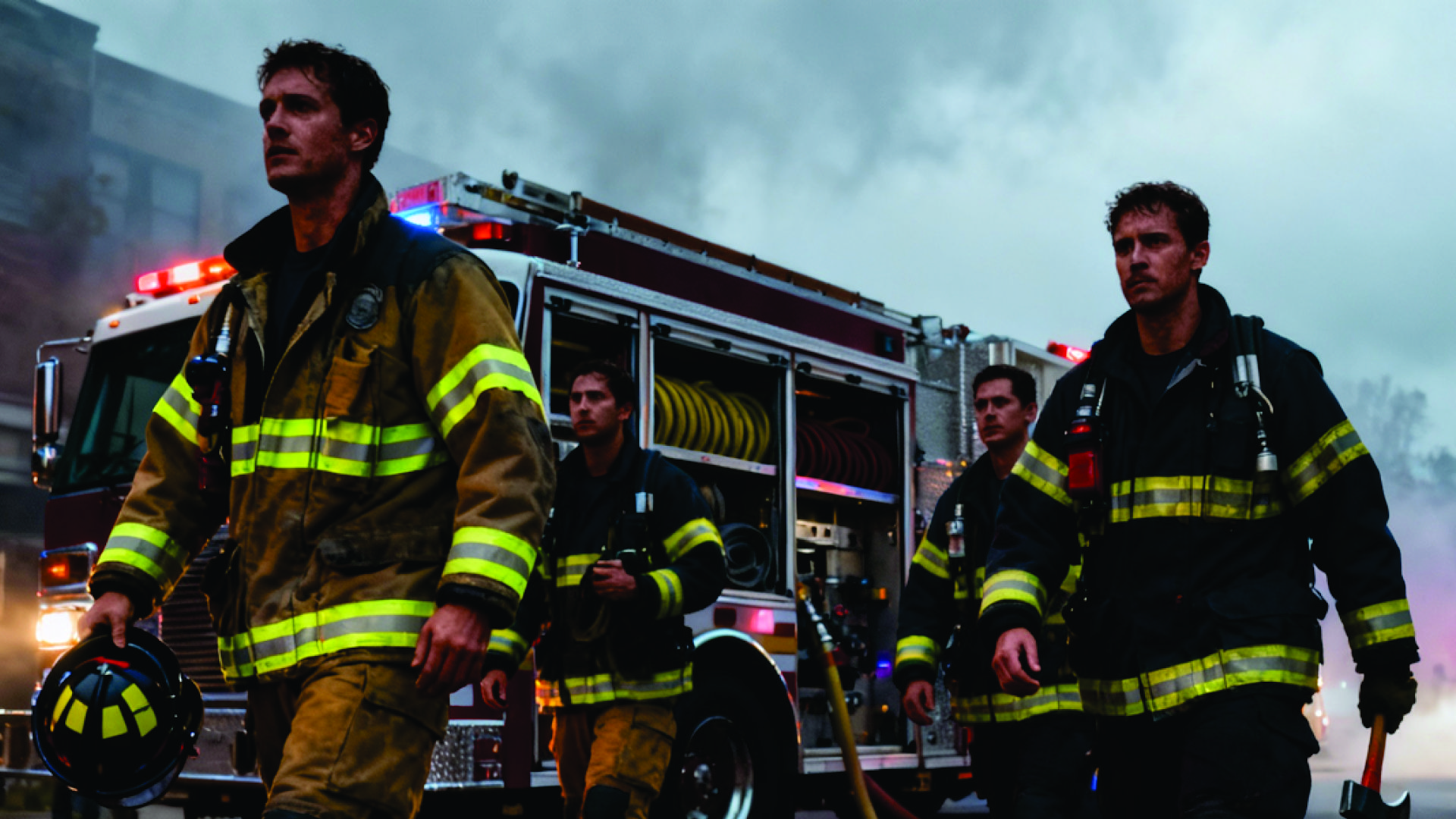
Smarter vs. Brighter: Why Passive Visibility Still Leads in HVSA
As regulatory expectations and field performance demands increase, being “visibly bright” isn’t enough. What matters is how consistently and reliably your reflective
